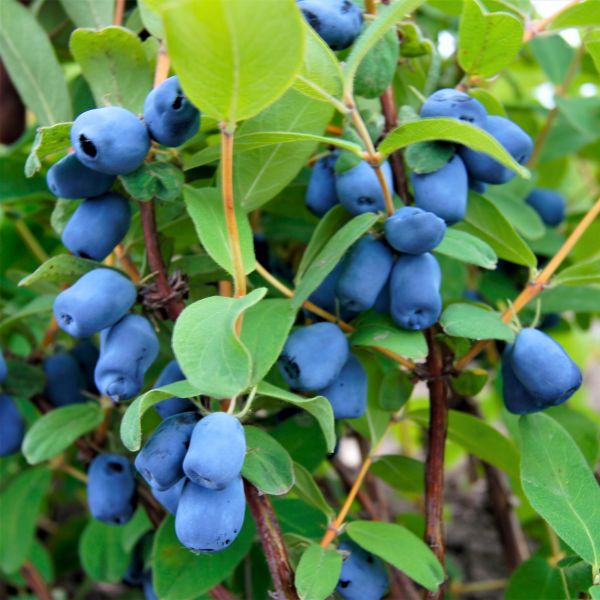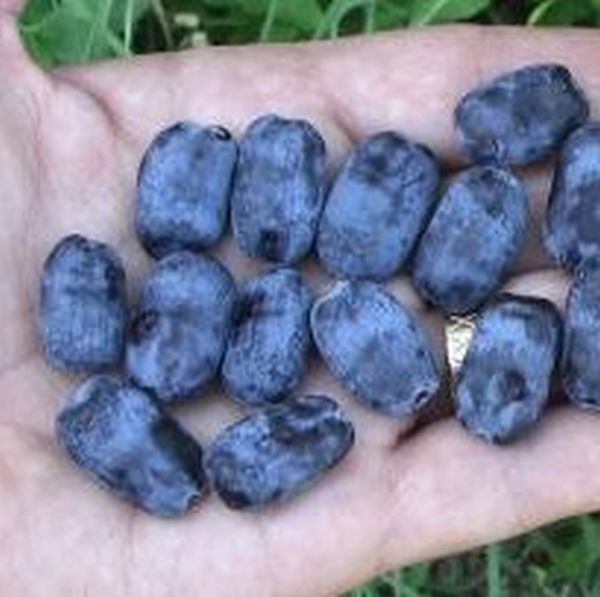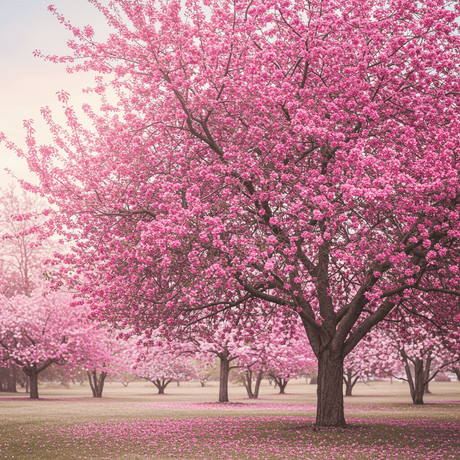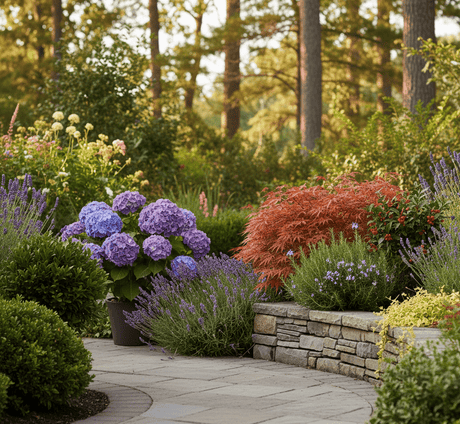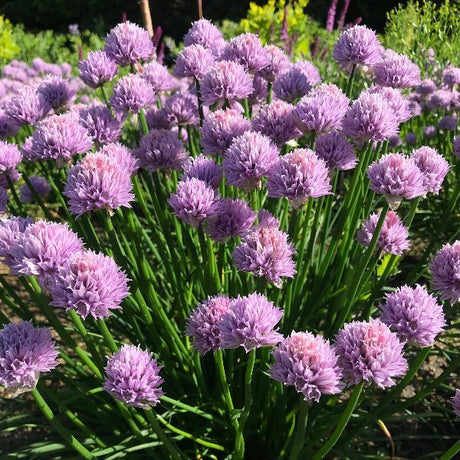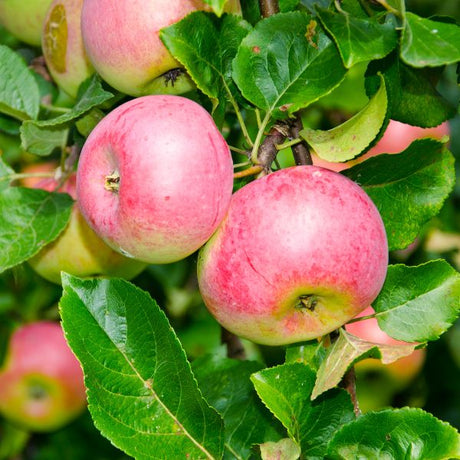Tundra Honeyberry Plant
Lonicera caerulea var. kamchatica 'Tundra'
Plant Sentry™
Plant Sentry™

Plant Sentry™ Protected
Your order is protected by our compliance system that:
- Prevents restricted plants from shipping to your state
- Ensures plants meet your state's agricultural requirements
- Protects gardens from invasive pests and diseases
Delivery and Shipping
Delivery and Shipping
Delivery and Shipping
Fast, Safe Plant Delivery
Ships in 3-4 business days • Tracking provided • Weather protected
| Under $50 | $9.99 |
| $50 - $99.99 | $14.99 |
| $100 - $149.99 | $16.99 |
| $150 - $198.99 | $24.99 |
| $199+ | FREE |
✓ Zone-specific timing • ✓ Professional packaging • ✓ Health guarantee
Understanding Plant Options
Nature Hills offers plants in two main formats:
- Container Plants: Grown in pots with soil, sized by container volume and plant age
- Bare Root Plants: Dormant plants without soil, sized by height measurements
Container Plant Sizes
Container sizes indicate plant age and growing capacity rather than liquid volume equivalents. Our containers follow industry-standard nursery "trade gallon" specifications, which differ from standard liquid gallon measurements.
Young Plants (6 months to 18 months old)
| Container Size | Actual Volume | Metric Equivalent |
|---|---|---|
| 2" x 2" x 3" | 0.18 - 0.21 dry quarts | 0.20 - 0.23 dry liters |
| 4" Container | 0.31 - 0.87 dry quarts | 0.35 - 0.96 dry liters |
| 4.5" Container | 0.65 dry quarts | 0.72 dry liters |
| 6" Container | 1.4 dry quarts | 1.59 dry liters |
| 1 Quart | 1 dry quart | 1.1 dry liters |
| 5.5" Container | 1.89 dry quarts | 2.08 dry liters |
Established Plants (18 months to 2.5 years old)
| Container Size | Actual Volume | Metric Equivalent |
|---|---|---|
| 2 Quart | 2 dry quarts | 2.2 dry liters |
| #1 Container | 2.26 - 3.73 dry quarts | 2.49 - 4.11 dry liters |
| 5" x 5" x 12" | 3.5 - 4.3 dry quarts | 3.85 - 4.74 dry liters |
Mature Plants (2-4 years old)
| Container Size | Actual Volume | Metric Equivalent |
|---|---|---|
| #2 Container | 1.19 - 1.76 dry gallons | 5.24 - 7.75 dry liters |
| #3 Container | 2.15 - 2.76 dry gallons | 8.14 - 12.16 dry liters |
Large Plants (3-5 years old)
| Container Size | Actual Volume | Metric Equivalent |
|---|---|---|
| #5 Container | 2.92 - 4.62 dry gallons | 12.86 - 20.35 dry liters |
| #6 Container | 5.25 - 6.01 dry gallons | 23.12 - 26.42 dry liters |
| #7 Container | 5.98 - 6.53 dry gallons | 26.34 - 28.76 dry liters |
Bare Root Plants
Bare root plants are sold by height from the root system to the top of the plant. Plants may exceed minimum height requirements.
Common Sizes:
- Trees: 1 foot, 2 feet, 3 feet, 4 feet, 5 feet, 6 feet
- Shrubs & Perennials: 1 foot, 18 inches, 2 feet
Important Notes
Container Volume Specifications
- Trade Gallon Standard: Our containers follow industry-standard "trade gallon" specifications established by the American National Standards Institute (ANSI Z60.1) for nursery stock
- Volume Variations: Actual soil volume may vary due to plant root systems and growing medium settlement
- Age Indicators: Container size primarily indicates plant age and maturity rather than liquid volume equivalents
Growing Conditions
- Plant size can vary based on variety and growing conditions
- Container size helps indicate plant maturity and establishment level
- Larger containers generally mean more established root systems and faster landscape establishment
Seasonal Availability
- Bare root plants are available seasonally when dormant
- Container plants are available throughout the growing season
- Specific varieties may have limited availability in certain sizes
Questions?
For questions about specific plant sizes or availability, please contact our plant experts who can help you choose the right size for your landscape needs.

Plant Sentry™ Protected
Your order is protected by our compliance system that:
- Prevents restricted plants from shipping to your state
- Ensures plants meet your state's agricultural requirements
- Protects gardens from invasive pests and diseases
Plant Profile & Growing Essentials
Cold hardy, Flowering, Edible, Ornamental Berries/Fruit, Attracts pollinators, Drought resistant, Hedge/Screen, and Non-invasive
Specifications
Specifications
-
Botanical Name
-
Height
-
Width
-
Growing Zones
-
Sunlight
-
Growth RateFast
-
Flower Color
-
Leaf Color
-
Pollinator FriendlyYes
-
Pollinator Required
-
Bloom PeriodLate Spring
Planting & Care Instructions
Planting & Care Instructions

Growing Zones 3-7
Have you ever tried a Honeyberry? If not, we'd like to describe the taste to you: Blackberry-Wild Blueberry-Currant-Cherry-Kiwi-Grape with a touch of Honeysuckle. Or, we can describe it as just plain delicious! The Tundra Honeyberry Plant (Lonicera caerulea 'Tundra') is great fruit, especially for northern gardens. They look like elongated blueberries and are so thin-skinned they actually melt in your mouth!
Tundra berries are thicker-skinned than other Honeyberries, so they take firm handling better. But don't let their skin fool you - these are some tough berries. As their name suggests, these guys can handle the cold...and by cold, we mean COLD. They are hardy to -55 degrees and the flowers are hardy to 20 degrees!
We bet you'll be the first in your neighborhood to have some of these, so order now before your neighbors become the Farmer's Market stars. They need a pollinator, so order one of Tundra's sister plants, too, like Berry Blue Honeyberry or Honeybee™.
Planting and Application:
Tundra is a first-rate fresh-eating berry, but you'll be the star of the Farmer's Market if you jar up a batch of jam! Try them in pies and muffins, too - anywhere that you'd use a blueberry without worrying about pH. Jams, tarts, breakfast cereal, baked goods and more, are perfect uses for this antioxidant-rich Superfruit! Tundra is a first-rate fresh eating berry, but you'll be the star of the Farmer's Market if you jar up a batch of jam! Try them in pies and muffins, too - anywhere that you'd use a blueberry.
The bushes themselves are great low privacy hedges, focal points and specimen plants and good for placing in containers and large planters in the sun. Anchor garden beds and shade vegetable and herb gardens with these unique bushes, or use as a backdrop to other berry bushes and perennials.
- Delicious Edible Fruit
- Fast Growing
- Also Called Haskap
- Spring Flowers
- Perfect For Colder Temperatures
#ProPlantTips for Care:
Tundra Honeyberries are long-lived (50 years+) and plants older than 5 years can produce between 2 and 10 pounds of berries a season! They love the sun in the north and a little shade in the south and just about any soil will do, even clay soils.
- Full Sun
- Enriched Well-Drained Soil
- Prune Immediately After Fruiting
- Mulch & Regular Moisture
- Easy-Going - Not pH-Dependent
Grow your own superfruit with ease by ordering the Tundra Honeyberry Bush with its pollinator today from NatureHills.com!

